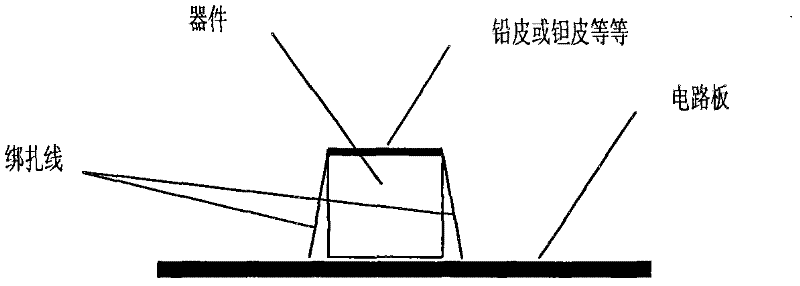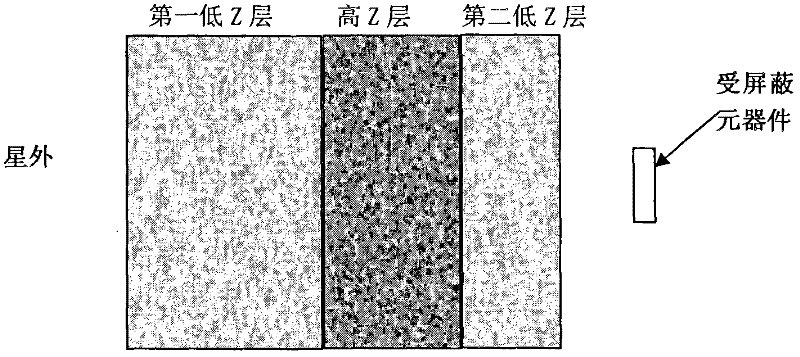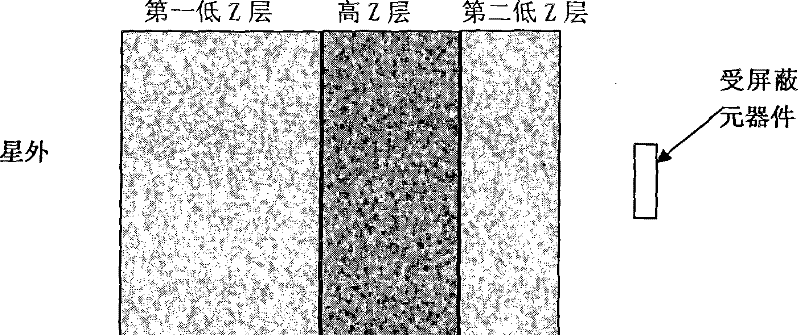Anti-total-dose shielding device
A shielding device, anti-total dose technology, applied in aerospace safety/emergency devices, aerospace aircraft radiation protection devices, etc. The effect of improving satellite life and reliability
- Summary
- Abstract
- Description
- Claims
- Application Information
AI Technical Summary
Problems solved by technology
Method used
Image
Examples
Embodiment Construction
[0015] Before describing the present invention in detail, the concepts involved in the present invention will be explained accordingly.
[0016] High Z: The high Z mentioned in the present invention refers to elements with high atomic number, specifically, materials with atomic number ≥ 50, including tungsten, tantalum, barium, osmium, iridium, platinum and gold .
[0017] Low Z: The low Z mentioned in the present invention refers to elements with low atomic numbers, specifically, materials with atomic numbers ≤ 30, including hydrogen, lithium, carbon, boron, nitrogen, aluminum, and silicon , copper, nickel, titanium, chromium, cobalt and iron, or compounds (or alloys) between them.
[0018] The present invention will be further described below in conjunction with the accompanying drawings and specific embodiments.
[0019] refer to figure 2 , the anti-total dose shielding device of the present invention comprises a first low-Z layer, a high-Z layer and a second low-Z laye...
PUM
 Login to View More
Login to View More Abstract
Description
Claims
Application Information
 Login to View More
Login to View More - R&D
- Intellectual Property
- Life Sciences
- Materials
- Tech Scout
- Unparalleled Data Quality
- Higher Quality Content
- 60% Fewer Hallucinations
Browse by: Latest US Patents, China's latest patents, Technical Efficacy Thesaurus, Application Domain, Technology Topic, Popular Technical Reports.
© 2025 PatSnap. All rights reserved.Legal|Privacy policy|Modern Slavery Act Transparency Statement|Sitemap|About US| Contact US: help@patsnap.com



